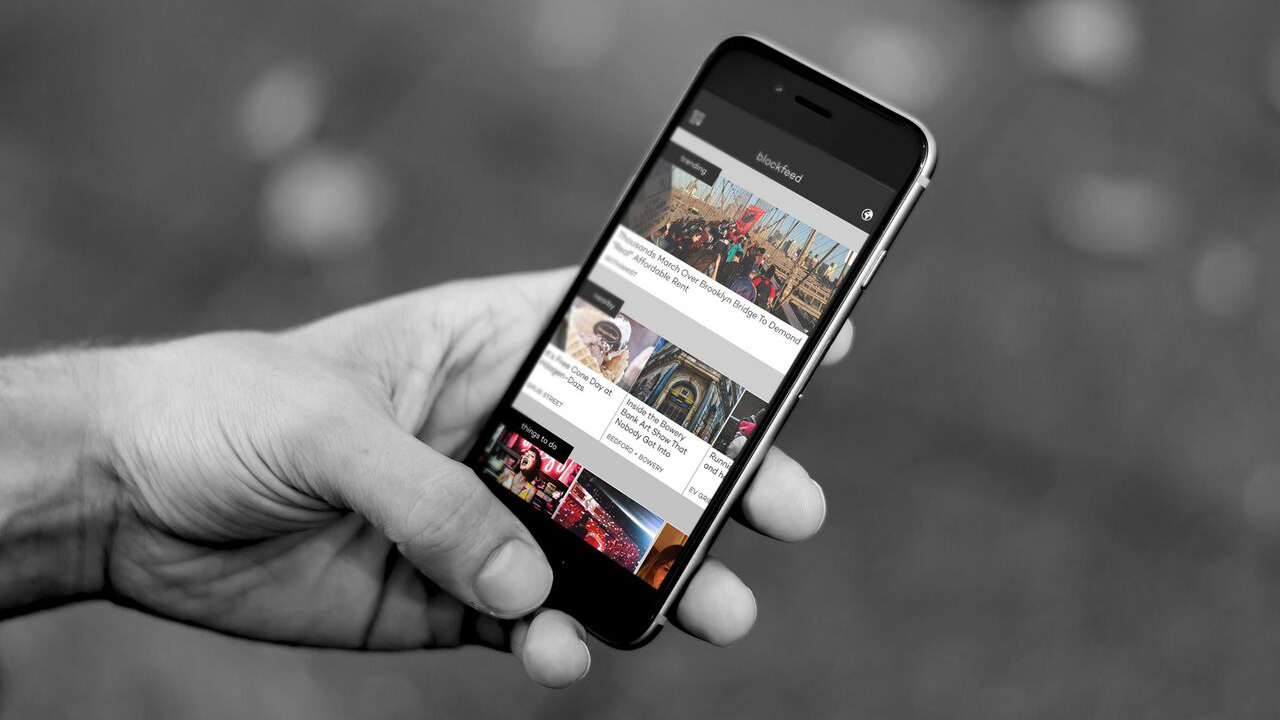Most apps are dumb and bad and you don’t need them. But Blockfeed is good and useful if you live in New York City. It geolocates local stories from New York news publications (including ANIMAL) and creates a feed tailored to the user’s precise location. For example, if I open the app at home in Bed-Stuy or at my office in Soho, I see two different feeds. The closer I am physically to the story, the higher up it appears.
In a city as big as New York, where every neighborhood is basically a town unto itself, it can be a challenge to find the most relevant local news across the dozens of websites that cover it. The Daily News might write something about an event happening in your neighborhood that you’d like to attend, but it gets hidden in the constant deluge of content from all your various social accounts and you miss it. Or there’s a small local blog has its finger on the pulse of the neighborhood but you’ve never heard of it. Blockfeed organizes all that relevant information into one place. It solves the problem of being unable to easily search for neighborhood news by location. It’s like following a bunch of websites on Twitter, but easier to navigate.

Blockfeed evolved from Qork, a sort of community-focused bulletin board from the same founders that relied on user-submitted content. Getting enough quality content was a challenge, and the most reliable sources were local news websites. So they scrapped becoming a citizen-journalism outlet and focused on making other producers’ news more accessible.
“In a city like NYC, there is an extremely vibrant local journalism community, regularly producing high value articles. However, many locals have no idea these publications even exist,” CEO Phillip Perkins told ANIMAL in an email. “We saw an opportunity to connect locals with these stories in a better way.”
Perkins used to work as a software engineer at Bloomberg, so the programming that powers Blockfeed is sophisticated. The app’s aggregator continuously pulls in stories from dozens of websites and organizes them into a feed with title, link, and art. Blockfeed’s editor-in-chief Adam May then determines if the story fits Blockfeed’s New York focus, and if it does, what part of New York. He adds a geotag and double-checks the category and puts it on the front page. May estimates he sees about 600-700 stories per day, and around 450 of those make it to Blockfeed. The process takes about 10 seconds per article. The geotags are checked against a user’s phone’s location to determine what shows up on their personal front page.
They launched on July 1 by soliciting feedback from Reddit, where the response was uniformly positive. Most of the responses were similar to this one from user molingrad, who said, “Very clean, nice job. I think this is the first random app I’ve come across on reddit that I will actually use.” Perkins did not disclose how many users Blockfeed has signed up, but said that numbers are growing via word-of-mouth and they’re seeing “exceptional repeat usage.”
The downsides of the app, so far, are some technical glitches like navigation buttons that don’t work properly. It’s also not possible to read stories within the app; following a “read more” link on a story’s summary page redirects to a publisher’s website. This is better for publishers, as they still get traffic from the app, but it bucks industry trends toward keeping things in-app, like Facebook Instant and Snapchat Discover. It’s a less elegant, slightly user-unfriendly feature in the otherwise sleek app.
Currently the app is only available for iOS. An Android version is in development.
(Images: Blockfeed)


